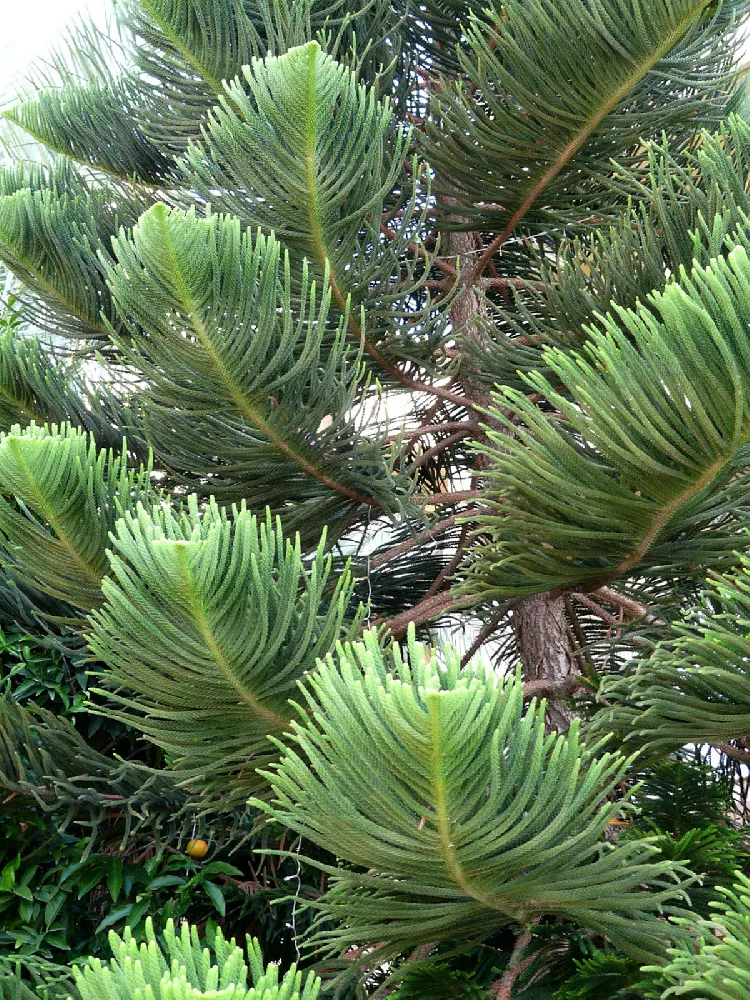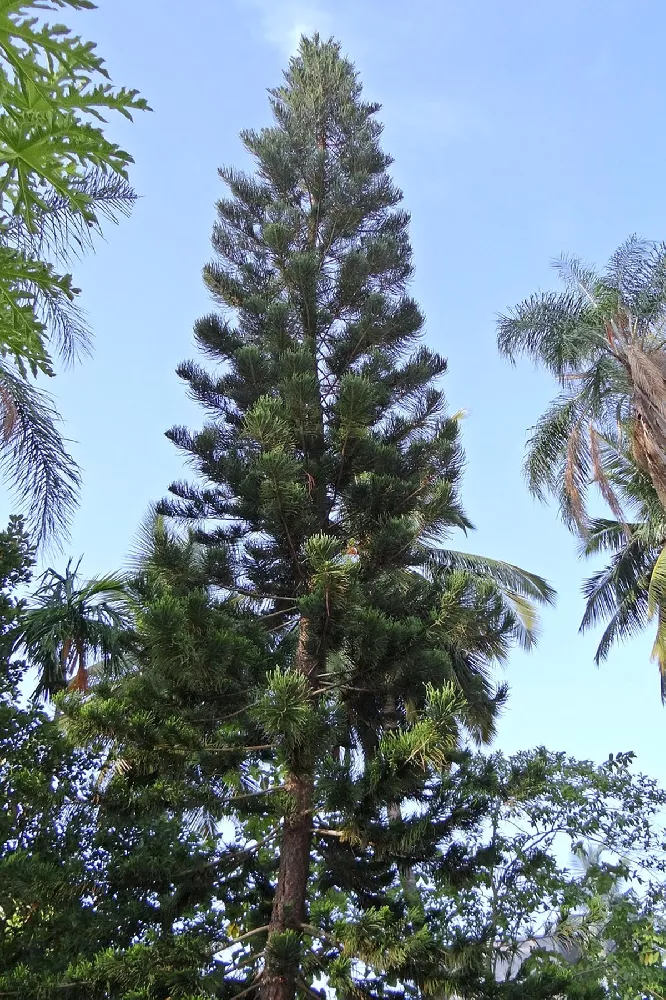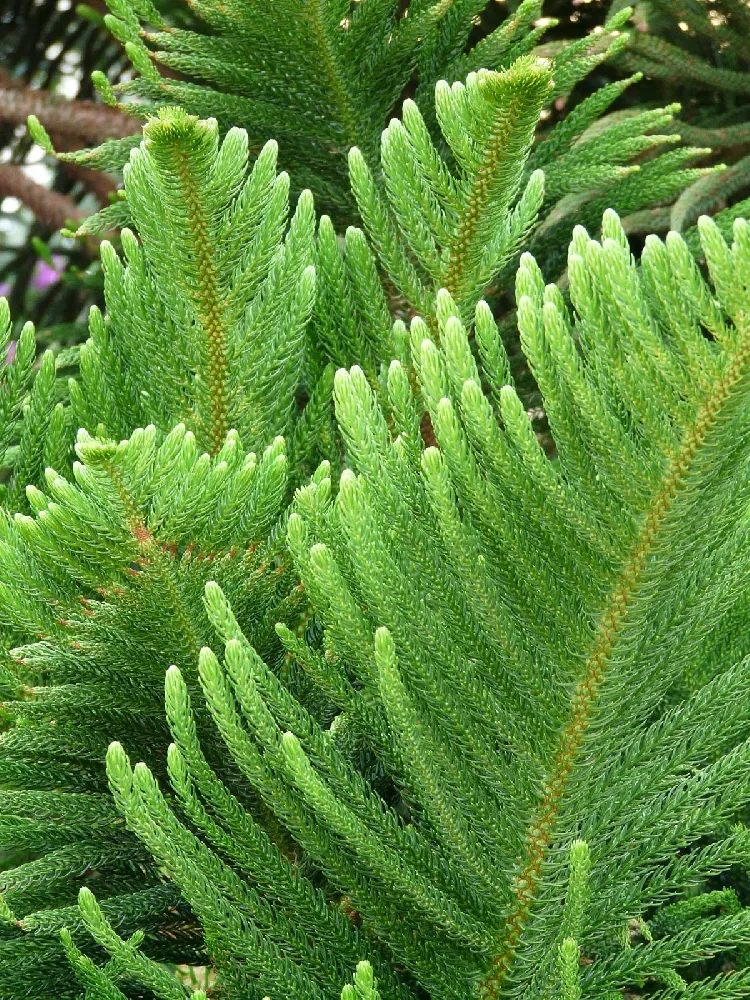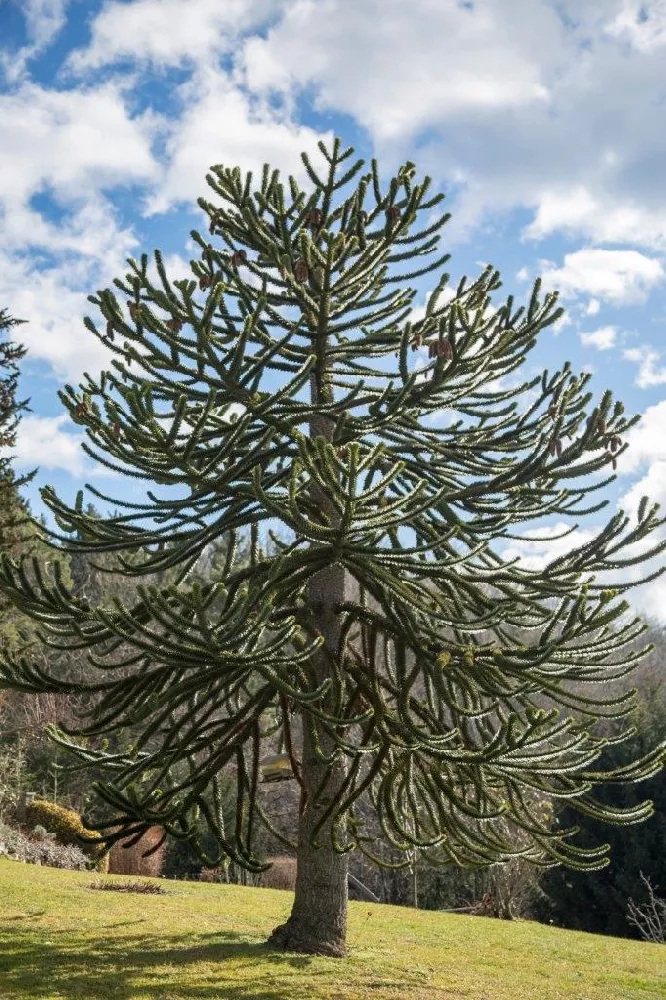- Home >
- Christmas Trees >
- Norfolk Island Pine Trees
Norfolk Island Pine Trees for Sale - Buying & Growing Guide
- Ships in 1-2 days
- 1-Year Warranty Eligible
- Pots or accessories are not included unless specified in the product options.
Shipping Details:
Once your order is shipped, you’ll receive an email with a tracking number and estimated delivery date. Most orders ship immediately, but some items are seasonal and may only ship in spring or fall. These products are noted on the website.
Norfolk Island pines, Araucaria heterophylla, are unique plants: they look like the sort of stately pine tree that might be found in an arboreal Canadian forest, but they are actually tropical conifers native to Norfolk Island off the coast of New Zealand. These attractive evergreens grow well in the most southern parts of the U.S., but they excel throughout the rest of the country as a container-grown plant that tolerates diverse conditions beautifully and adds interest and structure to any room in which they're placed. Here are some of the reasons to grow a Norfolk Island pine tree:
- While they can reach a height of 200 feet outside, a container-grown plant maxes out at a manageable 5 to 8 feet.
- These slow growers don't outgrow their containers frequently and are easy to care for.
- Features a straight vertical trunk and symmetrical branches — making it an excellent Christmas tree.
Plant Care
Sunlight

The Norfolk Island pine grows well in partial sun, with four hours of direct light a day; preferably not hot afternoon sun.
Watering
Keep your Norfolk Island pine's soil moist with weekly watering.
Fertilizing

Fertilize with a balanced, slow-release fertilizer according to package directions throughout the growing season.
Planting and Care
Planting instructions
If planting outside, site your tree where it will be shaded from harsh afternoon sun. Indoors, choose a container that is one-third larger than the root ball, and use a potting mix that is sandy and somewhat acidic. Unpot your plant and tease out any encircling roots, which can girdle the tree and eventually kill it.
Dig a hole that is wider than the root ball and just as deep, and place your plant in it, holding it upright and steady. Fill in around it with more of the soil mix, tamping down as you go to eliminate air pockets. Once planted, water thoroughly. If planted outdoors, apply an organic mulch, such as bark chips, around the root zone to conserve moisture.
If your Norfolk Island pine tree seems at all wobbly, place several wooden or metal stakes about 8 inches from the trunk. Tie them loosely to the trunk with fabric ties (old pantyhose makes an excellent tie).
Watering and nutrients
The Norfolk Island pine is forgiving if you forget to water it, and it’s best to hold off on watering until the top of the soil feels dry. Usually, that means watering about once a week, with roughly an inch of water. Stop watering if water begins to run out of the container’s drainage holes.
Feed your container-grown Norfolk Island pine with a balanced liquid fertilizer throughout the growing season. During winter, scale back on fertilizing, as the plant won’t grow much at this time. Norfolk Island pines planted outdoors should be fed with a fertilizer designed for tropical trees, as per package directions.
Pruning
The lower branches of your Norfolk Island pine will slowly die out as new growth appears at the top of the tree. Prune them out as they turn brown. Also prune out any dead, diseased, or broken branches. It’s best not to prune the top of the tree, but if a container-grown plant is getting too tall, you can cut out the central leader (main top branch), which will cause multiple, smaller branches to appear.
Pests, diseases, and animals
Many of the insects that commonly bother houseplants, such as aphids, whiteflies, and scale insects, may be drawn to your Norfolk Island pine. Minor infestations can be manually removed by using a damp cloth to wipe out insects and their eggs. For a severe infestation, you may need to apply an insecticide formulated for houseplants, but avoid this if possible.
Anthracnose is a disease that may prey on your Norfolk Island pine. If you see sections of the tree turning yellow or brown, that may be the problem. Prune out any infected branches, and apply a light dose of a copper fungicide.
Achieving maximum results
It’s not hard to achieve maximum results with your Norfolk Island pine tree. These easy-going plants need little in the way of care. It’s important to remember that despite their name, Norfolk Island pines are not actually true pine trees. They have more in common with plants such as orchids. When caring for a Norfolk Island pine, you want to be sure that it is kept away from drafts and taken inside if the temperatures outside drop below 40 degrees Fahrenheit. Like other tropical plants, they also benefit from high humidity, and misting the leaves once a week or having a tray full of pebbles and water near the plant will help it remain properly hydrated.
FAQs
How cold-hardy are Norfolk Island pines?
They're not as cold-hardy as most conifers, and they will die if exposed to temperatures below 35 degrees Fahrenheit. If you live north of USDA hardiness zone 9, your best bet is to grow an attractive Norfolk Island pine as a patio plant, bringing it inside when the temperatures are low in winter.
Will my container-grown Norfolk Island pine get too big?
Probably not. In the wild, Norfolk Island pines can reach 200 feet, but when the roots are constrained by a container, your tree should max out at between 5 to 8 feet. If it shows signs of getting out of control, you can prune out the central leader, the top central branch, cutting it back to a manageable size. This will spur several vertical shoots to grow toward the top of the tree, so it will look less like a Christmas tree, but you can keep them trimmed to a size that works for your space.
Is the Norfolk Island pine toxic to animals?
Norfolk Island pines are mildly toxic to dogs and cats. Eating any part of the plant may cause mouth irritation, stomachache, and vomiting. You may also see signs of depression or unusual sleepiness in your pet if they have ingested needles. If symptoms persist, take your pet to the veterinarian for treatment.
Compare Similar Products
You can't add more Product Name - Product size to the cart.
OK




